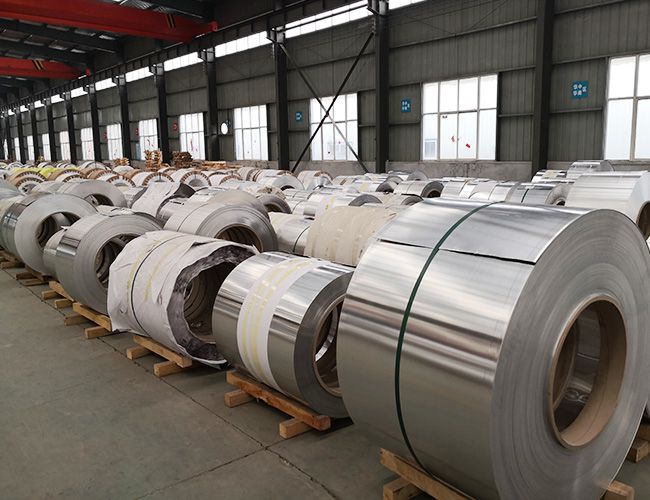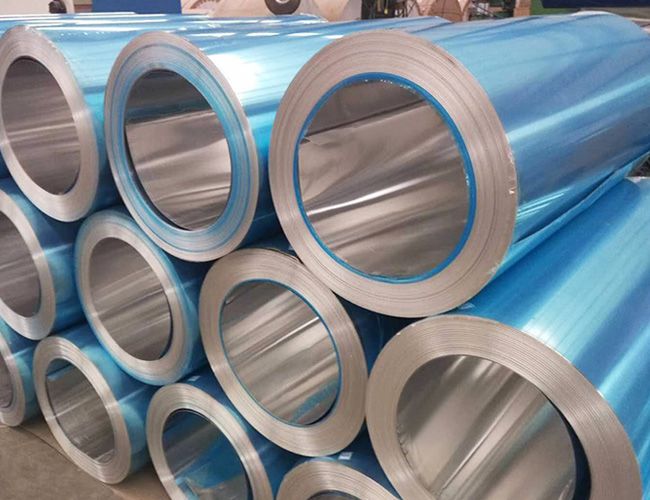With aluminum coil more and more widely coming into our lives, people's requirements for aluminum coil's quality are getting higher and higher. What kind of aluminum coil can attract more users? It is necessary to work hard on the visual effect and surface treatment of aluminum coil. Here's a detailed explanation of six unique processes of surface treatment in aluminum coil:

1. Sandblasting (shot peening): It is a process of cleaning and roughening metal surfaces using the impact of high-velocity sand streams. The surface treatment of aluminum parts in this method can make the surface of the workpiece obtain a certain degree of cleanliness and different roughness, so that the mechanical properties of the surface of the workpiece can be improved, thus improving the fatigue resistance of the workpiece.It increases the adhesion between it and the coating, prolongs the durability of the coating film, and is also conducive to the leveling and decoration of the coating. This process is often seen in Apple's various products, and is increasingly used in existing TV covers or mid-frames.
2. Polishing: A processing method that uses mechanical, chemical or electrochemical methods to reduce the surface roughness of the workpiece to obtain a bright and flat surface. The polishing process is mainly divided into: mechanical polishing, chemical polishing, electrolytic polishing. The aluminum parts are mechanically polished + electrolytically polished, which can be close to the mirror effect of stainless steel, giving people a high-end, simple, stylish and future feeling (of course, it is easy to leave fingerprints and needs to be taken care of).

3. Wire drawing: Metal wire drawing is the manufacturing process of repeatedly scraping an aluminum coil out of lines with sandpaper. Drawing can be divided into straight drawing, random drawing, spiral drawing, thread drawing. The metal wire drawing process can clearly show every tiny silk mark, so that the fine hair luster appears in the metal matte, and the product has a sense of fashion and technology.
4. Highlight:For cutting, the engraving machine is used to reinforce the diamond knife on the main shaft of the engraving machine rotating at high speed (generally 20,000 rpm) to cut the parts.Produces localized highlight areas on the product surface. The brightness of the cutting highlights is affected by the speed of the milling drill. The faster the drill speed, the brighter the cutting highlights, and vice versa, the darker and easier to produce cutting lines. High-gloss and high-gloss cutting are particularly used in mobile phones. In recent years, some TV metal frames have adopted high-gloss milling technology. In addition, anodizing and wire drawing processes make the TV set full of fashion and technology.

5. Anodizing:Anodizing refers to the electrochemical oxidation of metals or alloys. After the aluminum coil is cut into a sheet shape, under the corresponding electrolyte and specific process conditions, due to the action of the applied current,the process of forming an oxide film on an aluminum product (anode).Anodizing can not only solve the defects of aluminum surface hardness and wear resistance, but also prolong the service life of aluminum and enhance the aesthetics. It has become an indispensable part of aluminum surface treatment.It is a widely used and very successful process at present.
6. Two-color anodizing: Two-color anodizing refers to anodizing on one product and imparting different colors to specific areas. Two-color anodizing has a high cost due to the complex process; however, the contrast between the two colors can better reflect the unique appearance of the product.
< Share the roller coating process on... How to avoid the problem of aluminu... >
